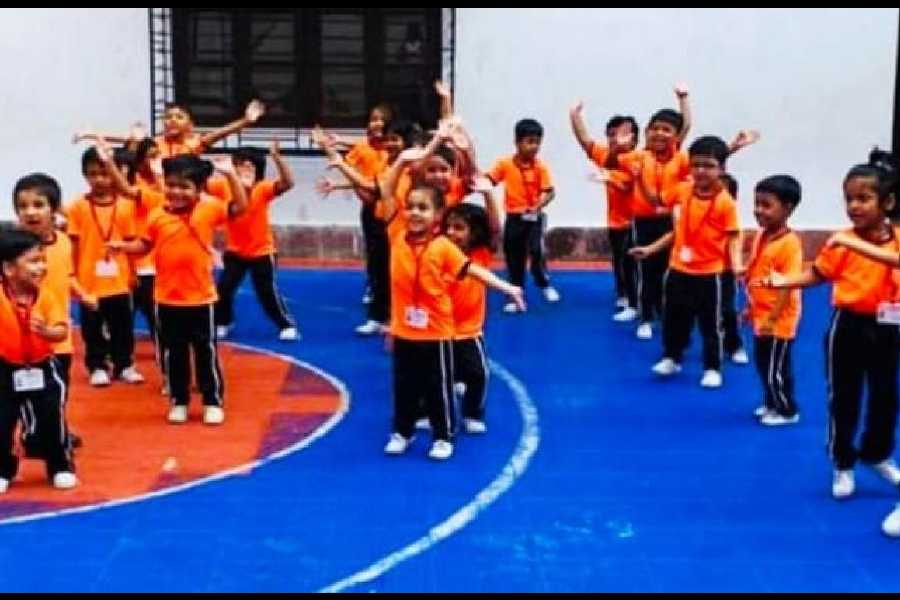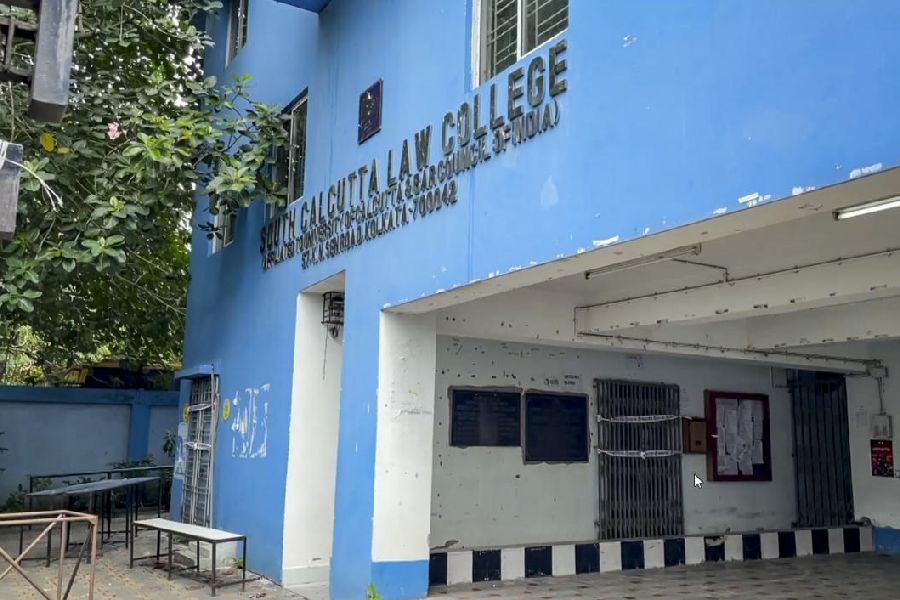 |
Guwahati, May 2: The next time you huddle on your bed and helplessly watch rainwater swirling around the room after two days’ of showers, blame the inactive seventies and vow to give up drain-clogging plastic.
As boats plied on the streets and prayed for sunshine following last week’s incessant downpour, experts drew up a list of reasons that cause the inevitable inundation.
An unimplemented masterplan, a renewed but abandoned project, the city’s bowl shape and the people’s reluctance to forgo plastic were just a few of them.
Lack of plan
The root of today’s problem of artificial floods in the city lies in the seventies, said former executive director of Housing and Urban Development Corporation P.K. Rajkhowa.
“The masterplan for drainage, sewerage and water supply of Guwahati was prepared by the state government in 1971 with the help of Calcutta Metropolitan Planning Organisation. However, it was never implemented in totality because of paucity of funds and other reasons best known to the government,” Rajkhowa said.
“If the provisions in that masterplan were implemented then, the city today would have a much impro- ved and scientific drainage network,” he added.
In 1998-99, the town and country-planning department prepared a detailed project report on Guwahati Metropolitan Area Storm Drainage Improvement Programme with financial assistance from Hudco, on the basis of the revised version of the 1971 masterplan.
This much-hyped Rs 52.48-crore scheme was also abandoned midway following detection of major flaws in the project.
The present drainage network is unscientific and lacks proper planning, said Rajkhowa.
To prevent waterlogging at Bharalumukh, Santipur and adjoining areas, he said more pumps should be added to the existing four machines used to pump out excess water from the Bharalu to the Brahmaputra.
These pumps are generally put to use during the monsoon when the level of the Brahmaputra is above that of Bharalu to prevent backflow of water from the Brahmaputra.
“To divert water from the Bharalu during monsoon, the Mora Bharalu needs to be dredged and made encroachment free,” he said.
According to him, the present manual system of desiltation and cleaning of drains and rivulets in the city has turned out to be ineffective.
“The parties engaged by the government for this job neither have experience, nor expertise. The government should select technically-equipped parties with past experience of executing such work,” he said.
River siltation
Professor of civil engineering at IIT Guwahati and principal investigator of the Centre of Excellence for Integrated Land-use Planning and Water Resources Management, Arup Kumar Sarma, said the solution to the city’s artificial floods lies in adopting a multi-disciplinary and holistic approach.
“The biggest problem with our drainage system is the high rate of sedimentation of silt carried by runoff water from the hills. First and foremost, the hills in and around the city need to be restored through ecological management practices so that the sediments can be restricted at the source itself,” he said.
“Cleaning and desiltation of drains by government agencies like the Guwahati Metropolitan Development Authority (GMDA), PWD and water resources department must be carried out simultaneously instead of doing it in isolation,” Sarma said.
He said one of the problems with the construction and maintenance of city drains is piecemeal work carried out by different agencies instead of taking an integrated approach.
“The carrying capacity of a drain depends on its slope velocity and sectional area. Simply increasing the size without maintaining the correct gradient will not help,” he said.
“Different drains and natural drainage channels should be scientifically interconnected, keeping the gradient in mind,” he said.
“Moreover, filling up of water bodies should be restricted. Strict measures should be taken to prevent throwing garbage into the drains and pumping will be necessary in some crucial locations,” Sarma said.
Bowl-shaped city
Consultant engineer J.N. Khataniar said the waterlogging problem has arisen because of the city’s peculiar topography, which is bowl shaped, surrounded by hills.
Areas like Anil Nagar, Nabin Nagar, Lachit Nagar being at the lowest points of the bowl, suffer from automatic stagnation of water after a heavy rainfall.
Plastic menace
Amarjyoti Kashyap, president of Environ, an NGO, expressed serious concern over indiscriminate dumping of plastic waste, mostly plastic carry bags, in drains.
“Even plastic waste dumped on streets and open spaces find their way into the drains, thereby clogging them,” he said.
Kashyap said plastics being non-biodegradable — it takes 500 to thousands of years for plastics to degrade.
He said though there is a ban on plastic bags below 20 microns, so far it has been ineffective for want of proper enforcement.
“The only solution to end this plastic menace are the three ‘R’s — Reduce, Reuse and Recycle,” he said.
Encroachment
A senior government official, on condition of anonymity, said despite several socio-political and legal constraints in evicting people encroaching upon drainage channels and hills, they are doing their best to deal with this problem.
“There were instances when eviction drives were launched, it led to a hue and cry and vote bank politics came into play. There was strong opposition and sharp reactions from different quarters, including some political parties. As a result of that, the government was forced to suspend the drive,” he said.
“Sometimes, we were even accused of atrocities on poor and landless indigenous people in the name of eviction drives. Then the question of rehabilitation of the evicted families also arises. One must understand that it is not easy to work with tied hands,” he said.
“Many a time, the eviction drives could not be carried out as the encroachers obtained stay orders from the court,” the source added.
Poetry
I was escorted to the circuit house which Anil Sarkar visited several times during my stay, just to ensure that I was comfortable.
I was moved by the man’s simplicity and honesty which are rare qualities in political leaders. But Anil Sarkar is a man of refined tastes and I was happy to be his guest.
The meeting was held at the Nazrul Khsetra at Banamalipur and there were poets from many different communities who spoke Kok borok, Kuki, Mizo, Mog, Hrangkhwal and Chakma etcamong others.
The meeting place was full of peo ple — invited dignitaries, poets, writers and those who are were just curious.
I noticed a booklet being distributed among those pres ent at the meeting. It con tained the Bengali translations of two of my poems, including the long poem dedicated to the
Brahmaputra and titled My Red River.
I remembered presenting my collection of poems to Anil Sarkar. He had taken the trou- ble of translating the poem to Bengali which he did with great flair.
The second poem was my tribute to Tripura, O my beau tiful Tripura. It had been translated to Bengali by my friend Mukti Choudhury. The most wonderful moment of
the meeting came when Anil Sarkar himself recited the Bengali translation of My Red
River.
To be continued










